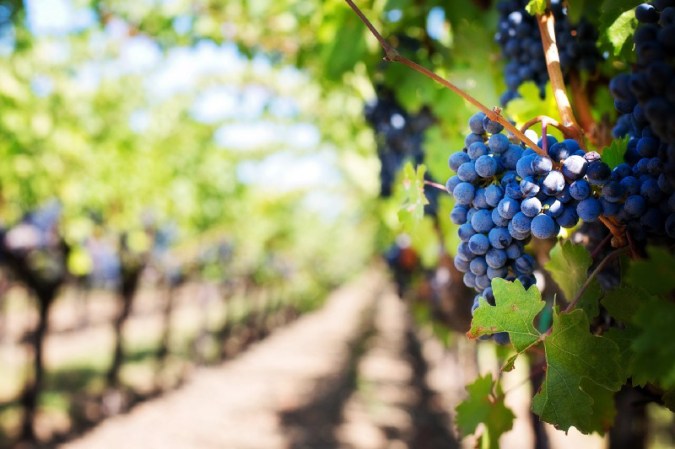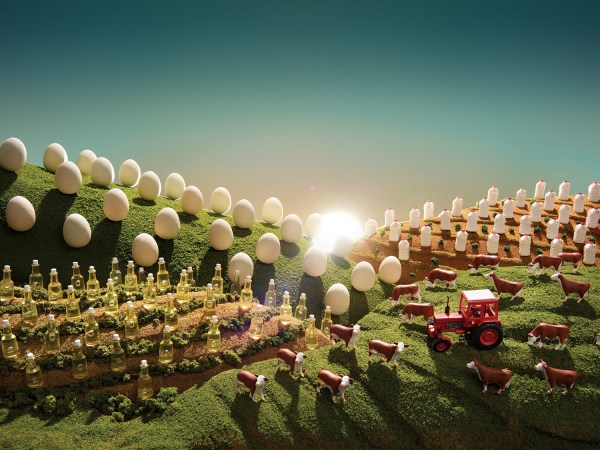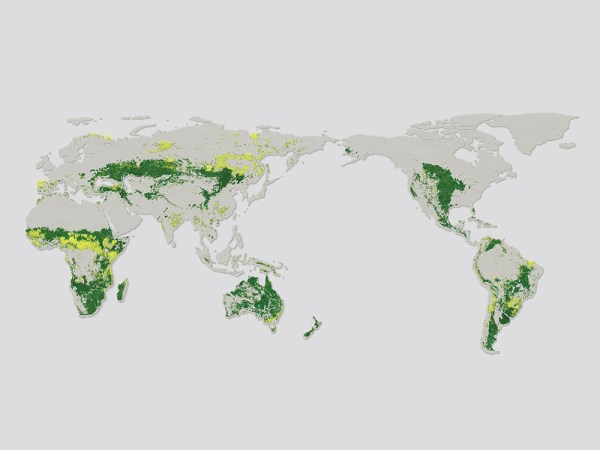

In 1935, the Dust Bowl came to Washington—and if we don’t change our ways, it could come back. A new report from the UN climate committee warns that much of the world risks the kind of land degradation that turned fertile farmland into desert during the 1930s. Luckily, this desolate stretch of history doesn’t just serve as a warning. It also provides potential solutions.
The District of Columbia was an unlikely place for a dust storm. Though the Midwest had been shrouded in clouds of dust since 1932, the lawmakers discussing the Dust Bowl in March 1935 were more than 1,000 miles away from the disaster. Then, something uncanny happened: As lawmakers deliberated the very issue of how to stem a series of droughts and the erosion and catastrophic dust storms that followed, a literal cloud fell on the city. Soon, the capital’s familiar marble monuments were covered in a layer of reddish dust. “A clay-colored veil hung before the Washington Monument, the Lincoln Memorial, the Capitol and the Library of Congress,” a reporter observed. That scenario may come to mind when you read the Intergovernmental Panel on Climate Change’s new Climate Change and Land Report, which details the ways humans have stripped the planet and calls for sustainable land management practices, many of which were developed in the wake of the Dirty Thirties.
If we continue to use land the way we do now, the report concludes, our species faces a grim future indeed. Humans directly affect more than 70 percent of Earth’s terrain, and it shows: Population growth, farming, and other land use have taken their toll, fueling rapid shifts in climate and threatening Earth’s ability to sustain both humans and itself. Land can only absorb 29 percent of humans’ total CO2 emissions per year. And desertification—the same kind of land degradation that caused dust to fly during the 1930s—further threatens Earth’s climate.
It’s been called “the greatest environmental challenge of our time,” and for good reason. In desertification, areas with scarce water get even less moisture, and irrigated farmland goes from fertile to desiccated. Climatic trends play a role, but humans’ land management mistakes fuel desertification, too.

The Dust Bowl is a classic example. White settlers poured onto the United States’ Great Plains during the mid-19th century, spurred by free property the federal government offered in exchange for cultivation. The semiarid prairie was home to a variety of native grasses, but the notion that it could be converted into productive farmland was misguided. The would-be farmers had no idea that the region went through extended wet periods followed by drier ones. Local plants had adapted to survive, and settlers thought that the existence of moisture meant more would follow. They also believed that “rain follows the plow”—a long-abandoned theory that the presence of farmers and settlers could bring humidity to dry climates—and the maxim set them up for disaster.
“They removed windbreaks and trees to plant fields in a relatively semi-arid area that had been wet,” says climatologist Marc Svoboda, who directs the National Drought Mitigation Center at the University of Nebraska. Then, during the 1920s, Great Plains farmers planted huge amounts of wheat in response to international demand. Investing in the drought-intolerant crop meant uprooting resilient prairie grasses, which had previously helped the soil survive dry seasons by storing moisture in their deep roots. “When the drought came, that landscape was much more vulnerable,” Svoboda says.
Come it did, and with catastrophic results. Beginning in 1931, the region experienced a series of four major drought episodes considered the worst in the nation’s history. Farmers weren’t prepared for this, or for the erosion that followed. Failing crops left soil rootless and loose, leaving it vulnerable to high winds.
Soon, epic dust storms swept the region. The same tempest that blew through Washington, DC left 12 million pounds of dust in Chicago alone. A month later, one of the most severe storms of the era, nicknamed “Black Sunday,” enveloped the Great Plains. It was 1,000 miles long, contained 300,000 tons of dust, and traveled up to 100 miles per hour. This weather didn’t just affect the land: Farm animals choked on dust and suffocated. At least 7,000 people died from “dust pneumonia” as a result of breathing in the fine particulates, and countless more were driven from their homes and livelihoods by the endless, swirling dirt. The storms are also thought to have hastened the spread of measles and other infectious diseases. It was an environmental catastrophe—and one that humans had the power to sidestep.

The IPCC’s latest predictions sound awfully familiar. The committee warns that ongoing soil degradation will hasten desertification, which can fuel climate change. When soil degrades, it can’t trap as much carbon, releasing this greenhouse gas (along with nitrous oxide) into the atmosphere. That means a warmer climate, which means more droughts and still more desertification. Resource-intensive uses of land, like massive farming operations, will cause water scarcity and degrade the soil—a vicious cycle like the one farmers faced during the Dust Bowl. During that event, human-induced land degradation not only led to dust storms, but made the droughts worse.
But the Dust Bowl might offer more than a warning. The event actually led to sensible land management practices that are still used today, says Charles Rice, a distinguished professor in Kansas State University’s department of agronomy. In the wake of the Dust Bowl, he explains, the concept of soil conservation—protecting soil’s fertility and keeping it from eroding—finally got traction in the United States.
Soil conservation has three guiding principles, he explains: don’t till the soil, keep it covered, and keep crops diverse. Reduced tillage preserves the root pathways forged by preexisting plants. Those paths act like pores, allowing the ground to store water for use in dry times and soak it up more effectively during floods. Cover crops, like alfalfa, clover, and sorghum, keep the soil loose after a cash crop has been harvested. When cover crops become part of the soil during preparation for a crop like corn or wheat, they increase soil moisture and provide larger yields. Since they keep a field’s precious soil covered and preserve its pores, cover crops also prevent earth from becoming so fine it turns into dust. Planting diversely prevents the nutrient drain that occurs when the same crops grow season after season. Rotating through different varieties acts more like a multivitamin, adding a variety of nutrients to the soil over time. Drought-resistant crops can step in occasionally to save water, and use the water that’s already in the soil more efficiently.
Farmers can also conserve their soil by diversifying their farmland’s portfolio, notes Rice. They might plant several kinds of crops in one area and keep livestock on another, so that drought doesn’t put the entire swath of soil at risk.
Those post-Dust-Bowl practices have paid off. “Over time, we got better fertility and crops that have been bred for more drought tolerance,” says Rice. The United States’ investment in soil conservation has made the land more resilient than it was before the days of dust pneumonia.
But that doesn’t mean it can’t happen again. Rice warns that 21st-century farmers have to do more than just follow the basic tenets of soil conservation if they want to stave off further desertification. Landowners must rethink their approach to crops, profits, and technology. By sharing data and creating advanced computer models, he says, farmers could use better drought forecasting to dictate which crops they choose. Dust Bowl-era farmers didn’t have computers to help them adapt.
Rice looks forward to a future where high-tech sensors help provide real-time data about soil moisture, and robots that water just the individual plants in need of moisture instead of soaking entire fields. “I guess I’m an optimist,” he says. “The right investments could really help reduce desertification and provide some resilience to those Dust Bowl type events.”
Despite a heaping dose of bad news about humanity’s use of land, the IPCC strikes an optimistic note, too. Not only can we prevent future desertification, but we can take the action required to do so in the near-term—if we’re willing to acknowledge the dust clouds ahead.















